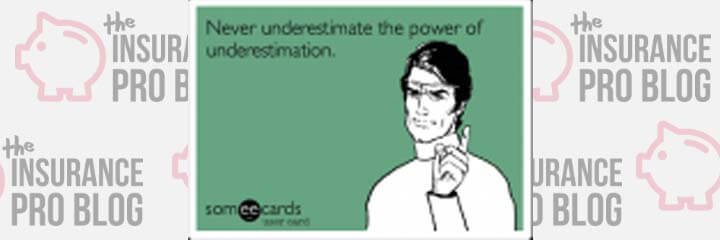Podcast: Play in new window | Download
We’ve long held indexed universal life insurance assumed credited interest rates at 6% across the board. And we’ve long been criticized for the practice. The problem, that others came to us with, was the fact that carriers have different cap rates, and those different cap rates do cause the overall overage credited interest rate to be higher or lower than a competitor with a different cap rate.
Our push back to this claim was simple. We understand there are different cap rates, but ultimately we want to evaluate the underlying expense assumptions of the product, and since those assumptions would create a dizzying array of spreadsheets if we tried to compare them all against one another (if we could get them at all) it was far easier to just leave everyone at the same assumed credited interest rate and look at the end result—cash surrender value and projected income.
And we’d still contend this approach pretty solidly evaluates variations in expense assumptions. But it does leave certain considerations out, and it poses some additional problems that we’ve more recently decided were worth worrying about.
Some Expenses were Overstated and some Understated
Sometimes higher caps have higher expenses to account for potential risks these higher caps pose to the insurer. We were always pretty quick to point out that this means evaluation required a slightly more refined evaluation to determine what sort of benefit (if any) was yielded from the higher cap, participation rate, etc. but some people assume automatically (and incorrectly) that higher expenses that go along with higher caps automatically offset any benefit yielded from those higher caps.
At the same time, sometimes carriers have lower caps (and even higher expenses), which go largely understated when we level the assumed interest rate across the board. The situation is pretty easy to think through once looked at in the following way. If higher caps would warrant higher average interest rate, then lower caps would suggest lower average interest rates.
Now, intuitively we could have simply pointed out that the lower cap company that already underperformed was definitely out of the running for a life insurance purchase where cash value development was of the most importance, but just how much of a difference this makes could be important because if a carrier performs relatively well despite lower caps we need to know if the lower cap should realistically include a lower assumed interest rate.
But how to make Changes?
We started to think about this as a potential problem about a year ago. And at that time, we played with the idea of adding maybe 10 basis points to the assumed rate of any carrier that had an exceptionally high cap rate. And in the beginning we were pretty happy with this as a way to account for higher cap rates.
But that arouse was the fact that we needed to adjust those with lower cap rates, and we wondered how fair it would be to drop those carriers maybe 10 basis points (meaning we’d drop below 6%, a number that was already pretty conservatively low). So, we decide to do some number crunching.
Our Method
We started by taking the 20 year performance of the S&P price index (i.e. no dividends). We wanted the 20 year specifically because it accounted for the “Lost Decade” and wouldn’t overstate the performance the market rally had for the entire 1980’s and 1990’s.
We then took around 20 various indexed universal life products and plugged their one-year point-to-point S&P 500 indexing parameters into the actual performance. The average credited interest rate among the entire group was 7.46%.
We then took the 20 year averages for each company (the highest of which was 8.87% and lowest was 4.53%) and calculated the relative amount that this company average beat the entire population average—or fell below it.
We then took a base interest rate assumption, and adjusted that base rate by the calculated adjustment rate determine by the company’s 20 year average relative to the population average. At first we used a 6% assumed rate, which forced us to illustrate some carriers at a rate that was far higher than we’re still comfortable illustrating. So, we adjusted the base rate down to 5.75%, and this placed our average assumed rate after the adjustment right around 6% for carriers whose cap rates come in right around the average current cap rate of 12.28%. Those with a higher cap rate enjoy a higher assumed credited interest rate.
We’ll be disclosing and using these newly calculated assumed rates later this year when we roll out the 2014 indexed universal life income comparison.
This Doesn’t Solve Everything
We are completely aware of the fact that this doesn’t solve everything. We used the S&P 500 one-year point-to-point because it’s found everywhere and because it’s been proven to be the most generous indexing option.
But there are carriers that have proprietary indexing options that they claim will perform better. We are currently evaluating those carriers and their index options to determine if we are comfortable recommending that their proprietary indexing options should be used and do give them an edge.


Hi Brandon and Brantley,
Really appreciate the thoughtful and intelligent approach you guys take. Coupled with an attitude and culture of continuous improvement, this can only benefit your clients and help them make better and more educated decisions when deciding upon a permanent life insurance commitment.
Keep up the amazing work!
I’m looking forward to the IUL comparison that’s a result of this new approach!
Thanks,
Ron